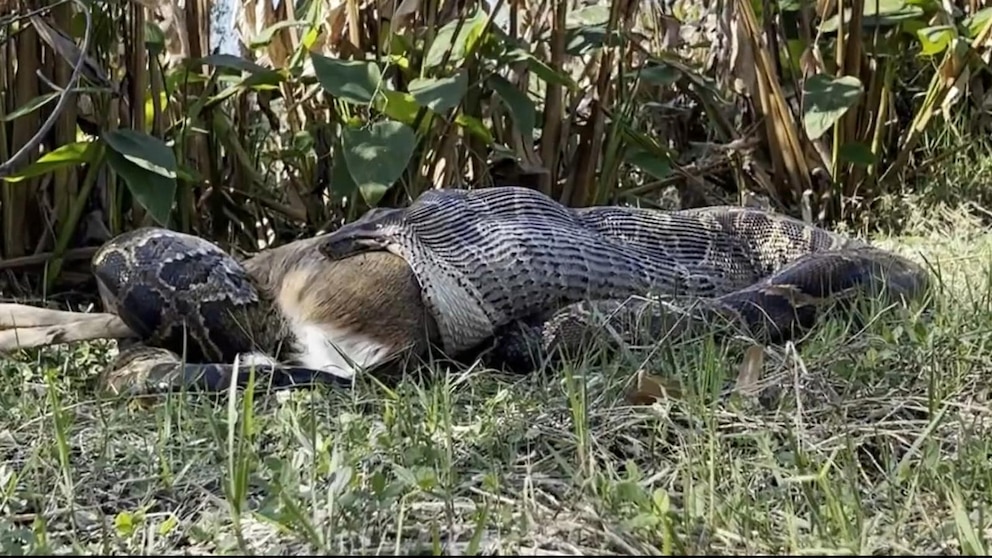The flourishing population of invasive Burmese pythons in Florida’s Everglades has triggered a concerning decline in the region’s native mammal species. Known for their massive size and voracious appetite, Burmese pythons have been directly linked to decreasing numbers of raccoons, rabbits, bobcats, and even deer across the Everglades, putting significant strain on the area’s delicate ecosystem.

